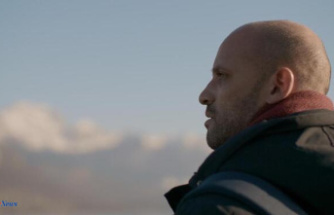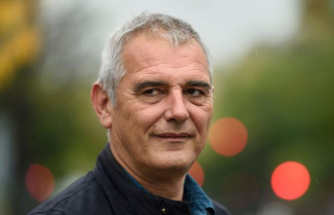In Hamburg, eight ferry lines bring locals and tourists across the Elbe for little money. The local transport line 62 to Finkenwerder is particularly popular. Skipper Maik Pazola works on her. A look behind the scenes.
The morning sun glitters on the water. Seagulls screech over the Landungsbrücken. There is a lot of activity at the piers. Maik Pazola waves from the wheelhouse of the "Altenwerder" ferry. The 26-year-old skipper transports workers, locals and tourists to Finkenwerder and offers them a harbor tour for the price of a bus ticket. The special feature: the Hadag ferries are part of the local public transport system. "I prefer to drive an iron," says the native of Hamburg. Up to 250 passengers fit on the 30 meter long ferry, whose shape is reminiscent of that household appliance.
Pazola broke off an apprenticeship as an office clerk in order to exchange the office for a ship. He has now been working for the ferry operator Hadag for three and a half years. Its territory is the Elbe. "That's really something great," says Pazola, who drives a different ship every day. He is one of around 130 employees at the city-owned shipping company, which has been an integral part of the Port of Hamburg since 1888. Today, 26 ships are on the move on eight lines, 365 days a year. According to the transport company, before the corona pandemic, it transported more than nine million passengers a year; in the past two years it was around six million.
And there could be even more in the future. The Hadag ferries are an elementary part of local public transport, says Hamburg's Transport Senator Anjes Tjarks (Greens). "That's why we want to strengthen the lines, further expand the connections and offers on the water and thus adapt to the increased demand and mobility needs." With the Hamburg-Takt, the market share of public transport is to increase from 22 percent in 2017 to 30 percent by 2030. In addition, Hadag is pushing ahead with the climate-neutral conversion of its fleet. Three battery-powered ferries were ordered for this purpose, which are to be delivered from 2024. "The harbor ferries of the future are emission-free, quiet, even more spacious and more comfortable," says Tjarks.
In order to get Hamburg's workers to their destination on time, Pazola has been on duty since 4:15 a.m. He quickly got used to getting up early. "If I make myself a liter of coffee, it's gone quickly," says the 26-year-old and laughs. He drives up to six tours every day. "You always have to be concentrated and keep an eye on the passengers," he says. Pazola operates two machines, which he controls using a lever. He can both accelerate and steer with it. There are four monitors in front of him. On two he can see what is happening on the ramp and in the passenger compartment. The other monitors show a nautical chart and radar.
The busy line 62 takes you down the Elbe past the fish market, Dockland and the Övelgönne museum harbor to Finkenwerder. It takes a good hour there and back. Word has long spread that ferries are a cheap alternative to harbor tours. All eight lines of the Hadag fleet can be used with one HVV ticket. "The harbor ferries are floating landmarks for Hamburg," says the Managing Director of Hamburg Tourismus GmbH, Michael Otremba. A trip in a "water taxi" is an essential part of a visit to the Hanseatic city.
Silke from Bielefeld agrees: "When I'm here, the trip to Finkenwerder is a must for me." Sylvie from Switzerland last took line 62 20 years ago. "Back then with small children, today I can just watch," she says. An elderly couple from France are happy to be able to use the bus, train and ferry with just one ticket. But locals also come along. In addition to a school class from Harvestehude, Mario is also on board. He works for the fire brigade, has his bike with him and regularly uses the ferry to get to work. "It's a pleasure. And it's usually quicker than by car."
Pazola can now tell who is from Hamburg and who is not at first glance. "Working here is like studying psychology," he says with a grin. What excites the skipper? "We meet a lot of different people, from all countries and from all walks of life." And when his work has become too routine for him, there are always passengers who remind Pazola of the special nature of his job. "These are often older people who used to go to sea themselves or worked at the port. Their eyes always get really big."
Meanwhile, the journey with line 62 is coming to an end. The "Altenwerder" ships back towards Landungsbrücken. Wouldn't Pazola want to take a picture of the fantastic view? "I have enough photos. I just enjoy it for myself."












